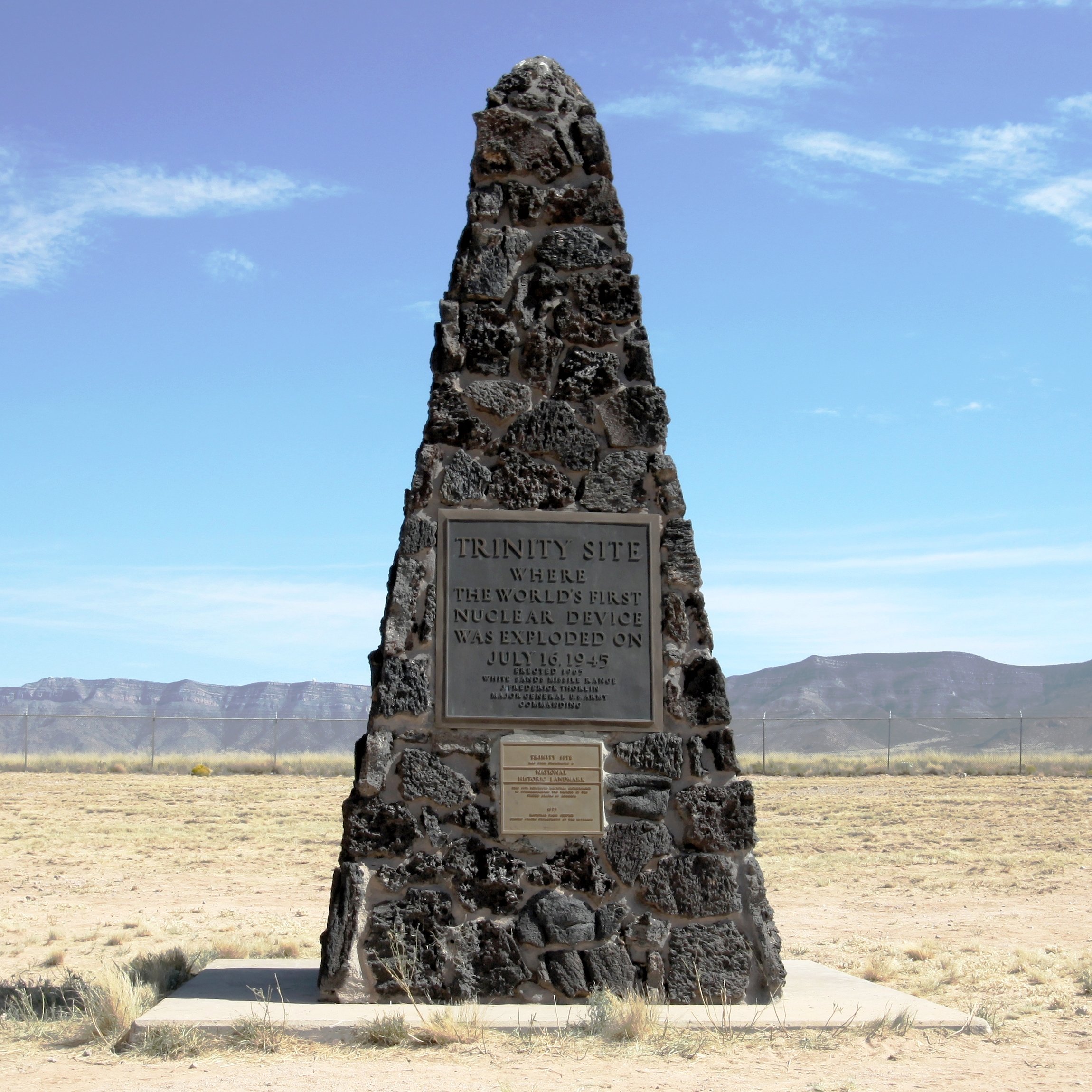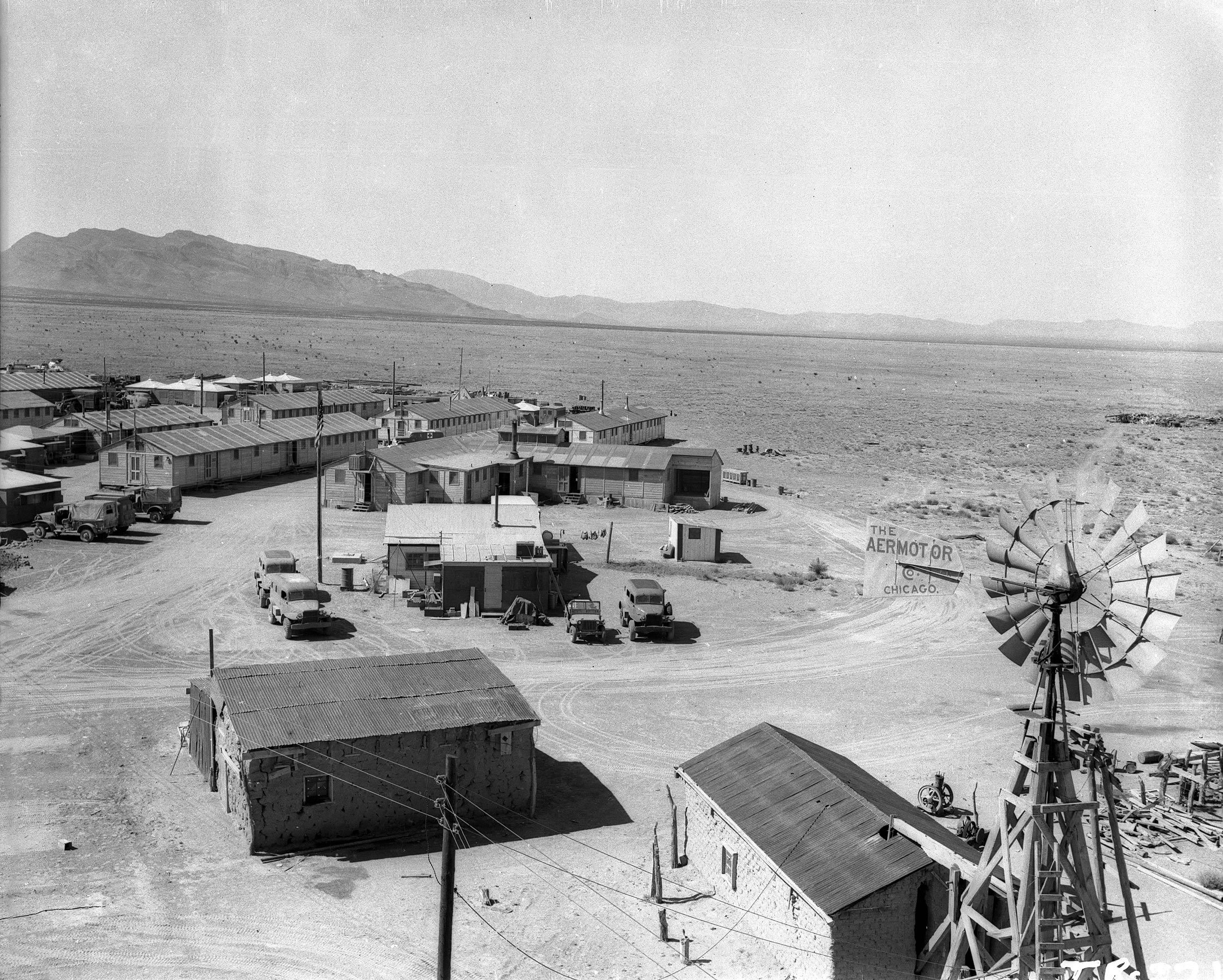The Truth About What Happened Here: New Mexico and the Manhattan Project
Toward the end of the Atomic Energy Commission’s (AEC) security hearing against J. Robert Oppenheimer in Christopher Nolan’s newly released film Oppenheimer, the protagonist remarks, “Is anyone ever going to tell the truth about what’s happening here?” That was exactly what many people and I had wondered about this film and whether or not it would tell the truth about what happened during the Manhattan Project in New Mexico or how communities in both northern and southern New Mexico have been negatively impacted. Spoiler alert: It doesn’t.
The film, which will probably win multiple awards for 181 minutes of riveting, non-linear storytelling, depicts the story of Oppenheimer, the father of the atomic bomb, who is often regarded as the American Prometheus for the way that he stole fire from the gods and created the world’s first nuclear weapons. Whereas Oppie’s most famous quote, “Now I am become Death, the destroyer of worlds,” is repeated twice in the film, it was a totally different “Now I am” quote that caught my attention. When Oppenheimer takes Kitty out to his New Mexican ranch early in their relationship, she recounts her previous marriage, then tells him, “Now I’m here, wherever the hell here is.” Well, the “here” she was referring to was New Mexico, and the film depicts it as vast and replete with life. (A keen eye will recognize Cerro Pedernal in the background of the wilderness shots because the scenes were filmed at Ghost Ranch, made famous by another culture vulture, Georgia O’Keefe, so actually they were not in Los Alamos or even the Pecos Wilderness.) Now that the Manhattan-Project-in-New-Mexico is getting plenty of attention, people are barely asking questions about how New Mexico was impacted by the war-era project in both northern New Mexico, where Los Alamos is situated, and southern New Mexico, where the Trinity Test occurred. Some people do not understand that these are different places over 200 miles apart, but both had communities of Indigenous peoples and Nuevomexicanas/os who were majorly impacted by the nuclear colonial project.


In an eighty-year-old romanticized narrative, both Hollywood and the U.S. government continue to portray New Mexico as “remote and uninhabitable” in the 1940s, but that is false. New Mexico became a state in 1912 when it was finally admitted into the union after a 64-year limbo period. New Mexico became a U.S. territory at the end of the U.S.-Mexico War with the signing of the Treaty of Guadalupe Hidalgo. Mexico lost over fifty percent of its land in the deal, and former Mexican territories were supposed to become states as quickly as possible. But whereas California had gold and was admitted as a state in 1850, New Mexico had “Indians and Mexicans” who were incapable of self-governance, they believed. (Interestingly, the New York Times was one of the worst perpetrators of this racist rhetoric.¹) Nonetheless, the U.S. Census recorded over 530,000 people living in New Mexico in 1940.
On November 16, 1942, Oppenheimer and Groves visited Los Alamos. It was snowing that day. In addition to the Los Alamos Ranch School for boys that was in Los Alamos, the team also visited over three dozen farms belonging to Mexican-Americans. They decided that the land could be easily acquired.
My great grandparents, José María and Delfina Serna, owned what later became called Tract E3 on the Pajarito Plateau, 62.5 acres that they farmed and ranched, when the government evicted them in 1943. José María was a subsistence farmer, and he sold or traded his harvest in the neighboring towns of Española and Santa Fe. When I interviewed my tía Ruby, my grandma Bernardita’s sister, in 2007, she told me how the family would travel by carro de bestia (horse-drawn wagon) from Los Alamos to the Santa Fe Indian School for her dad to sell and trade his crops. She told me they would heat rocks in a fire and wrap them up in blankets to keep their feet warm. They would stop in Tesuque to have lunch, of which she fondly remembered the homemade cheese, before continuing to their destination.
In late 1943, my Spanish-speaking great grandfather received a letter, in English, notifying him that his ranch was being condemned for war purposes. My tía Ruby remembered her father having fifteen days to remove their possessions from the plateau, which was impossible. In the end, my great grandfather received a check from the U.S. government for $750, that is, just $12 per acre. Later, other families swapped stories of similar letters received or about being confronted on their ranch and forced to leave. My family’s story is not unique. Whereas the white owners of the nearby Los Alamos Ranch School were adequately compensated for their land during the takeover of the Pajarito Plateau, including $3,650 for a football field, a hockey rink, and five tennis courts alone, Nuevomexicanos were not. Also, Nuevomexicanos were not properly notified of the condemnations of their ranches.
After denying an offer by then-Energy Secretary and former New Mexico Governor Bill Richardson for nine acres of land to be used to build a monument to the homesteaders in 1999, numerous families filed a class-action lawsuit under the name of Pajarito Plateau Homesteaders, Inc., representing thirty-four of the families who were evicted from their ranches atop the Pajarito Plateau without due process. Thirty-two Nuevomexicano family trees were filled with names such as Durán, García, Gómez, Quintána, Gonzáles, Luján, Montoya, Romero, Roybál, Serna, and Vigíl.
When the lawsuit was finally resolved, 20% of the 10 million dollar settlement was paid to the attorneys while the remaining 80%, or eight million dollars, was awarded to the claimants. Judge Joseph Caldwell told La Jicarita News that of the 1,200 claims involving 974 claimants, 762 claims were authorized for payment (“Pajarito Homesteaders Settlement”). Mark Schiller writes that, “Although a few elderly claimants with small families received about $100,000, Judge Caldwell went on to say that because some claims involved five generations of a family, payments amounted to as little as $150.” I recall that my dad’s payment was just enough to purchase a laptop for my sister.
If these were the events in northern New Mexico, the events in southern New Mexico were different, but also reflect the mistreatment of Latinx populations. On July 16, 1945, two and a half years after Oppenheimer and company began their occupation of New Mexico, they conducted what is known as the Trinity test, where scientists exploded a prototype of the plutonium bomb that was later dropped on Nagasaki, Japan. This prototype was called the Gadget. The communities near the test site have been riddled with cancer and other illnesses linked to radiation overexposure in the years following the detonation, and these communities were primarily Nuevomexicano. This group of people now refer to themselves as Trinity Downwinders, and they are still waiting to be compensated as the first victims of global nuclear testing.
I really did not know how I would react during the Trinity test scene in the film, but what actually triggered tears for me were the sheets. The sabanas that Kitty Oppenheimer hangs, the metaphorical sheets that Oppenheimer tells her to bring in after the test is conducted, and even the same metaphorical sheets that he tells her to leave out after his Q clearance is revoked at the conclusion of the AEC hearing are what upset me most. All I could think about was the story revealed by one downwind family that hung wet sheets in the window panes after the bomb blast shattered their windows. And I thought of another downwinder, Henry Herrera, who during his lifetime told how his mother had already hung the laundry that day when black ash soiled her clean laundry and she had to wash it. She was angry. As Herrera writes, “This filth landed all over our town, covered our village with radiation. It was on our roofs, our gardens, milk cows, rabbits, pigs, turkeys, and chickens” (Herrera, “First-Hand Account”). Little did the Nuevomexicanos living downwind of that bomb blast know that generations of Nuevomexicanos would live with the consequences from that day.
U.S. lawmakers left the Trinity Downwinders out of the U.S. Radiation Exposure and Compensation Act (RECA) when it was initially passed in 1990 and amended in 2000, which makes them ineligible for benefits provided to downwinders of atmospheric nuclear tests conducted at the Nevada Test Site. Since 1990, RECA has paid over $2 billion to eligible parties, which is not limited to downwinders but also includes some² uranium workers and on-site test participants. RECA is scheduled to “sunset” in 2024, and if it is not amended to include the Trinity Downwinders, they will have to start their battle for reparations again. From scratch.
The legacy of the Manhattan Project does not end where the movie leaves off. In fact, that marked the beginning of dealing with the fallout of the Manhattan Project for us in New Mexico. After land acquisition, they made us laborers in Los Alamos, and many people developed illnesses and died as a result of working in Los Alamos. One of them was my grandfather, Ramón Gómez, who died of colon cancer. Still, we fight to have our land and water cleaned up from hazardous radioactive and other wastes.
So, to answer Oppenheimer’s question in the film at the end of the AEC hearing: We have been trying to tell the truth about what happened in New Mexico during the Manhattan Project—maybe now people will want to hear our story.
—
Endnotes
¹ For a great discussion of this period and the fight for statehood, read Laura Gómez’s Manifest Destinies: The Making of the Mexican American Race.
² RECA does not include uranium workers after 1971, many of whom are Indigenous. For more on their specific struggle, read about the Post-71 Uranium Workers Committee: https://swuraniumimpacts.org/post-71-uranium-workers-committee/
Works Cited
Gómez, Myrriah. Nuclear Nuevo México: Colonialism and the Effects of the Nuclear Industrial Complex on Nuevomexicanos. University of Arizona Press 2022.
Herrera, Henry. “First-Hand Account.” Tularosa Basin Downwinders Consortium. https://www.trinitydownwinders.com/_files/ugd/2b2028_c92fea5300724b2cbcd1ae585aeb241a.pdf. 26 July 2023.
Kifer, Andy. The Real History Behind Christopher Nolan’s ‘Oppenheimer. Smithsonian Magazine. 18 July 2023. https://www.smithsonianmag.com/history/the-real-history-behind-christopher-nolans-oppenheimer-180982529/. 26 July 2023.
Schiller, Mark . “Pajarito Homesteaders Settlement Agreement Is "Unsettling.” Aug 2007. https://www.lajicarita.org/07aug.htm. 26 July 2023.
Tewa Women United. “Oppenheimer: And the Other Side of the Story.” 18 July 2023. https://tewawomenunited.org/2023/07/oppenheimer-and-the-other-side-of-the-story#. 26 July 2023.
Myrriah Gómez is a Nuevomexicana from the Pojoaque Valley. She is an assistant professor in the Honors College at the University of New Mexico and author of Nuclear Nuevo México: Colonialism and the Effects of the Nuclear Industrial Complex on Nuevomexicanos.




